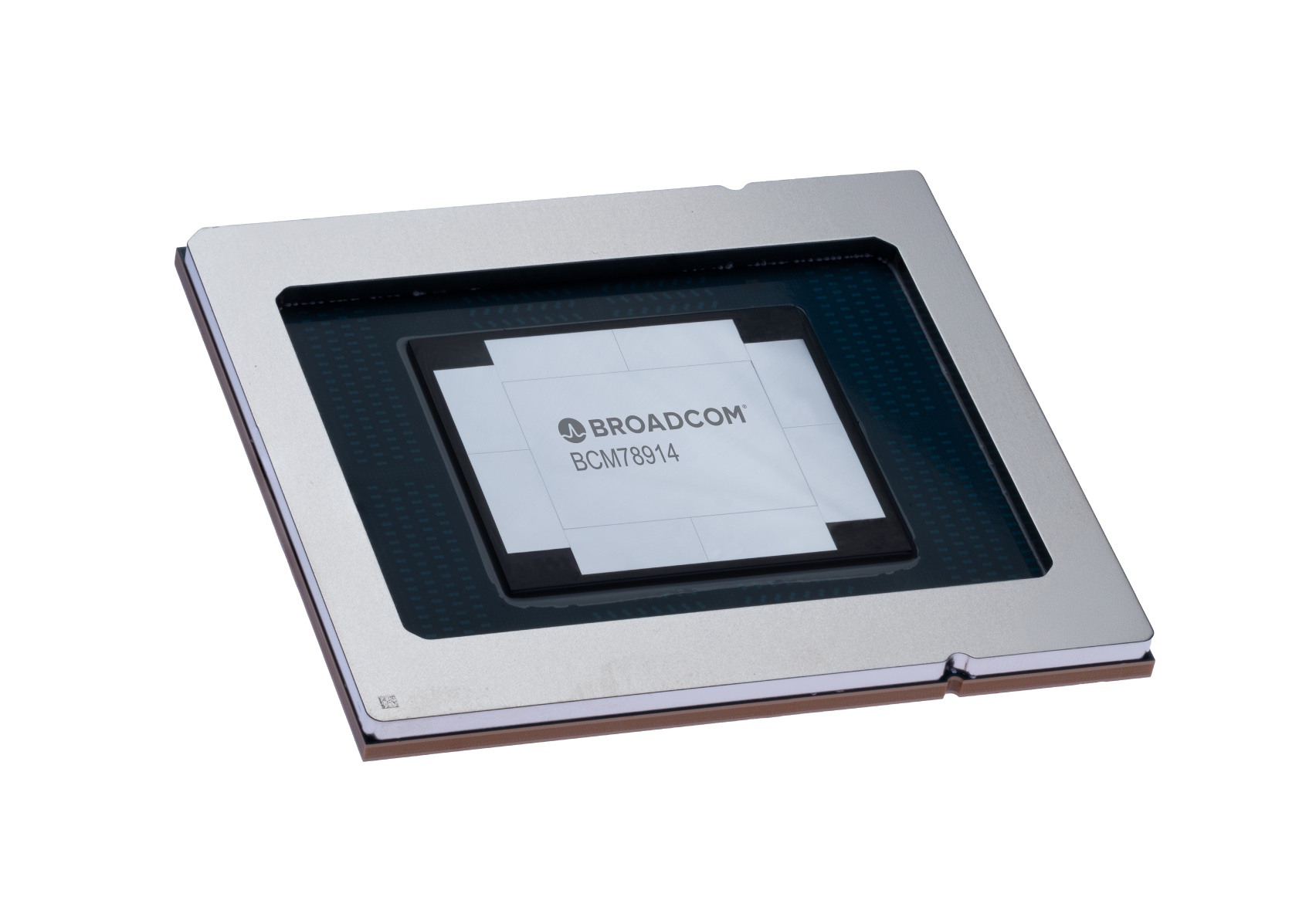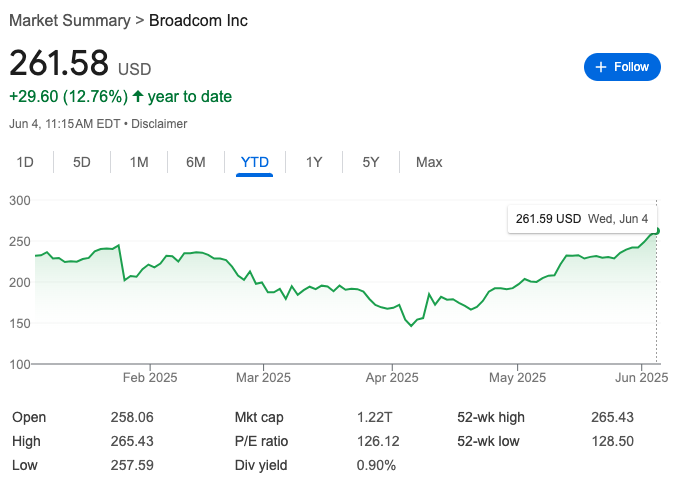Broadcom Chip Advances Ethernet for AI

Broadcom is shipping a new switch ASIC that could help advance Ethernet as the universal protocol for AI networks, while offering significant competition for NVIDIA’s Spectrum-X Ethernet platform.
The new Tomahawk 6 (TH6) switch series is an Ethernet-based chip that supports 102.4 Tbit/s of bandwidth adaptable to a variety of configurations. Doubling the capacity of the vendor’s preceding Tomahawk 5 chips, the TH6 is designed not just for so-called scale-out networking but for rack-level clustering, or scale-up applications, Broadcom says. (More on that momentarily.)

The Tomahawk 6 200-Gbit/s switch. Source: Broadcom
A Roster of Options for AI Workloads
Details of the TH6 are complex and technical, but here’s a quick rundown of key points highlighted by Broadcom in its announcement:
Expanded XPU support. Broadcom says TH6 can support scale-out of over 100,000 XPUs (meaning not just GPUs but also TPUs and other accelerator chips) in two tiers, saving power and component counts relative to existing switch ASICs, which typically require three tiers.
A range of switching options. The TH6 supports 512 XPU ports at 200 Gbit/s, or up to 1,024 ports via 100-Gbit/s. Each port corresponds to a PAM4 serializer/deserializer (SerDes) implemented in chiplet fashion, making the whole package more efficient.
Scale Up Ethernet (SUE). The TH6 series handles up to 512 XPUs in scale-up clusters, Broadcom said, and the vendor makes it clear that it's directly competitive with NVIDIA’s scale-up NVLink technology. Broadcom has made its SUE specifications available to the Open Compute Project (OCP).
Support for Ultra Ethernet Consortium (UEC). In addition to supporting RoCEv2, the TH6 complies with the UEC’s specs, which define an improved transport protocol, packet loss prevention, and other functions that bring Ethernet closer in performance to NVIDIA’s InfiniBand.
Advanced load balancing, routing, and telemetry. According to Broadcom, the TH6 features “Cognitive Routing 2.0 … [with] advanced telemetry, dynamic congestion control, rapid failure detection, and packet trimming, enabling global load balancing and adaptive flow control.”
Optical option. The TH6 will also be offered in a version with co-packaged optics (CPO), technology that eliminates the need for distinct optical transceivers by moving optical components right into the switch next to the switch ASIC. The result is faster and cheaper performance in AI workloads.
A Swipe at NVIDIA’s Dominance
Broadcom’s announcement was rife with swipes at NVIDIA, whose Spectrum-X rivals the performance claims of the Tomahawk 6 series. Indeed, NVIDIA’s making its own inroads with Spectrum-X, which NVIDIA says accounts for $8 billion in annual sales, and growing. At NVIDIA’s GTC conference in March, NVIDIA also unveiled its own CPO switches, which are set to ship in 2026.
One pillar of Broadcom’s argument against NVIDIA centers on the proprietary nature of NVLink, which Broadcom holds remains a lock-in for customers. On a videoed group discussion on theCUBE that was presented on Broadcom's site as part of its announcement, Ram Velaga, SVP and General Manager, Core Switching Group, Broadcom, said that Ethernet for scale-up as well as scale-out implementation will “democratize” AI networking.
“You don’t want the whole world to depend on one company that makes an XPU that’s controlling the pace at which the world is able to innovate and move forward,” Velaga said.

Ram Velaga, SVP and General Manager, Core Switching Group, Broadcom. Source: Broadcom
NVIDIA, Velaga implies, has tried to control the entire ecosystem of AI. Standards-based Ethernet is the means by which this dominance can be broken, paving the way for multiple XPU vendors to compete on the merits of their chips, instead of attempting to control the means by which those XPUs are networked together.
The NIC Question
Broadcom’s Velaga also brought up the role of smart network interface cards (smart NICs) in his rant against AI networking market dominance. Ethernet support is not open if the network requires specific smart NICs to connect to switches, he said. Here again NVIDIA is implied, since a pillar of Spectrum-X is the NVIDIA BlueField SuperNIC.
Representatives of Juniper Networks and Arista Networks were also on yesterday’s theCUBE video. Arista’s Etherlink portfolio of switches is agnostic to NICs and GPUs from other providers. In addition, by supporting Ethernet, Arista helps customers avoid vendor lock-in while increasing their networking options.
Both Juniper and Arista said they’re working on adapting TH6 chips in their AI networking product lines. These announcements should present alternatives to NVIDIA’s Spectrum-X, though that networking platform is becoming firmly entrenched among customers who formerly used InfiniBand.
Broadcom’s announcement was made just two days prior to its quarterly earnings report, due out tomorrow. Its stock has risen to a record high, as shown below:

Source: Google
Futuriom Take: Broadcom’s Tomahawk 6 release raises the stakes against NVIDIA while advancing the cause of Ethernet as the dominant networking technology for AI. Still, NVIDIA’s entrenchment in AI networking is a formidable force that will take substantial market momentum to dent.

















